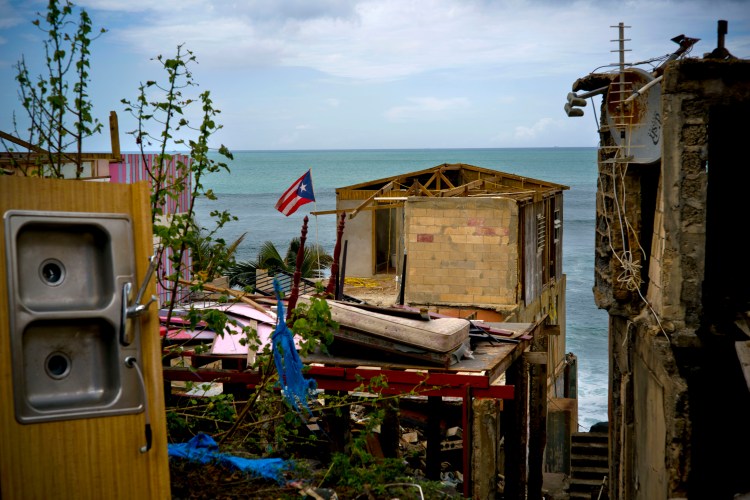SAN JUAN, Puerto Rico — Hurricane Maria killed nearly 3,000 people in Puerto Rico in the desperate, sweltering months after the storm – almost double the previous government estimate – with the elderly and impoverished hit hardest, according to an independent study ordered by the U.S. territory.
The new estimate of 2,975 dead in the six months after Maria devastated the island in September 2017 and knocked out the entire electrical grid was made by researchers with the Milken Institute School of Public Health at George Washington University. It was released Tuesday.
“We are hopeful that the government will accept this as an official death toll,” said Lynn Goldman, dean of the institute. “A lesson from this is that efforts for assistance and recovery need to focus as much as possible on lower-income areas, on people who are older, who are more vulnerable.”
The finding is almost twice the government’s previous estimate, included in a recent report to Congress, that there were 1,427 more deaths than normal in the three months after the storm.
The George Washington researchers said the official count from the Sept. 20 hurricane was low in part because doctors were not trained in how to classify deaths after a disaster.
Rep. Nydia Velazquez, a New York Democrat, said the report shows the U.S. government failed the people of Puerto Rico.
“These numbers are only the latest to underscore that the federal response to the hurricanes was disastrously inadequate,” she said. “And, as a result, thousands of our fellow American citizens lost their lives.”
There is no national standard for how to count disaster-related deaths. While the National Hurricane Center reports only direct deaths, such as those caused by flying debris or drowning, some local governments may include indirect deaths from such things as heart attacks and house fires.
Researchers with George Washington said they counted deaths over the span of six months – a much longer period than usual – because so many people were without power during that time.
“That caused a number of issues,” Goldman said, adding that people were forced to exert themselves physically or were exposed to intense heat without fans or air conditioning. “It’s fairly striking that you have so many households without electricity for so long. That’s unusual in the U.S. after a disaster.”
Puerto Rico’s government released data in June showing increases in several illnesses in 2017 that could have been linked to the storm: Cases of sepsis, a serious bloodstream infection usually caused by bacteria, rose from 708 in 2016 to 835 last year. Deaths from diabetes went from 3,151 to 3,250, and deaths from heart illnesses increased from 5,417 to 5,586.
Bethzaida Rosado said government and health care officials were not prepared for the storm, and she is still angry her 76-year-old mother died because oxygen tanks were not available on the island after the hurricane.
“Do you know what it’s like to see your mother run out of oxygen?” she said. “I don’t wish that on anyone.”
For the study, the researchers reviewed mortality data, including deaths by age, sex and municipality of residence, from July 2010 to February 2018. They also took into account an 8 percent drop in Puerto Rico’s population in the six months after the storm, when tens of thousands fled because of the damage.
However, they did not share details of the methodology, saying those will be released if the study is published in a scientific journal.
“We did not cherry-pick, I can promise you,” Goldman said. “We used very rigorous methodology.”
The study also found that government emergency plans in place when Maria hit were not designed for hurricanes greater than a Category 1. Maria was a Category 4 with 154 mph winds. Damage was estimated at more than $100 billion.
The researchers made several recommendations, including more emergency planning and government training for doctors on filling out death certificates.
Copy the Story LinkSend questions/comments to the editors.



Success. Please wait for the page to reload. If the page does not reload within 5 seconds, please refresh the page.
Enter your email and password to access comments.
Hi, to comment on stories you must . This profile is in addition to your subscription and website login.
Already have a commenting profile? .
Invalid username/password.
Please check your email to confirm and complete your registration.
Only subscribers are eligible to post comments. Please subscribe or login first for digital access. Here’s why.
Use the form below to reset your password. When you've submitted your account email, we will send an email with a reset code.